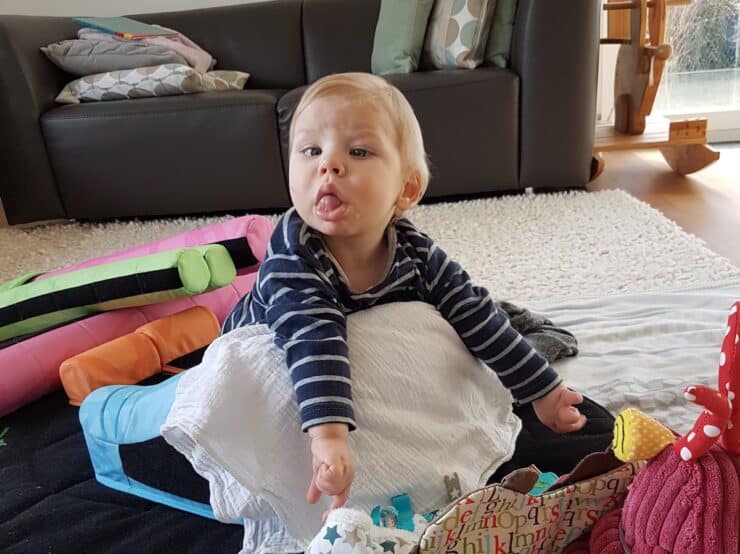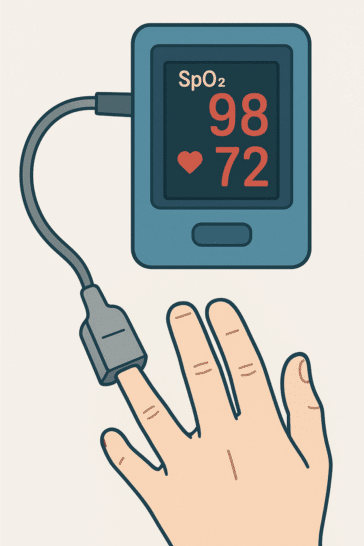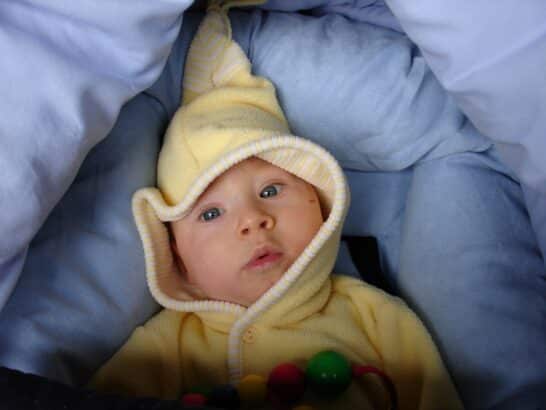A motor disorder in the form of frequent, involuntary movements and a significant impairment of voluntary motor skills is one of the main symptoms of PCH2.
Different Movement Patterns
This motor disorder may consist predominantly of fast, sweeping, twisting (choreoathetosis) or slow movements which are characterized by abnormal postures and distorted voluntary motor skills with increased muscle tone. These movement patterns often mix. Together, they are referred to as dyskinetic motor disorder.
Affected Body Parts
The motor disorder is particularly noticeable in the extremities (arms and legs), but also affects the muscles of the face and eyes. This can, for example, make targeted grasping or eye movements as well as swallowing and the entire digestive process very difficult. Affected children always make these movements when awake. They only stop moving when they are asleep. Some children are also prone to spastic motor disorders which can be accompanied by muscle contractures or joint deformities.
Therapy
There is no known causal therapy for the motor disorder associated with PCH2. The effects of the spastic motor disorder described above can be prevented by physiotherapy. Treatment options for the motor disorder can be found here.
Tips to Try Out
- A change in familiar movement patterns, e.g. significant strengthening or weakening, can indicate discomfort but may also be an expression of relaxation or emotions such as joy or anger. Good observation and knowledge of your child’s movement patterns can therefore contribute to a better understanding of their needs.
- Physiotherapy/massages to prevent muscle contracture and maintain muscle mobility
- Make sure your child is protected in their immediate vicinity so that they cannot injure themselves as a result of their sweeping movements.
Scientific Background
Data From Literature
- Barth (1993) already described the extrapyramidal motor disorder associated with chorea and dyskinesia as one of the landmark symptoms for the clinical diagnosis of PCH2.
- In Steinlin et al. (2007), 21 of 21 children had a motor disorder in the form of spasticity, dystonia or a combination of both.
- Namavar et al. (2011) described dyskinesia or dystonia in 69 of 72 children.
- In Budde et al. (2008) , 48 of 52 children had developed chorea or dystonia.
Natural History Study from 2014
In 29 of 33 children a hyperkinetic choreatic motor disorder was found, the remaining 4 children exhibited predominant spasticity, demonstrating a 100% correlation between PCH2 and the occurrence of an extrapyramidal motor disorder in this study.
The motor disorder among the study participants did not improve over the course of the children’s lives, not even with medication.
Natural History Study from 2023
Sweeping movements occurred in 62 of 65 children from an average age of 2 months. Of the 3 children who were not experiencing these movements, all had spasticity. Treatment was attempted in half of the cases (most frequently with baclofen), but the sweeping movements ceased in only one case, though this could not be linked to the medication. Most of the other substances used to treat the motor disorders overlapped with those used to treat sleep problems and restlessness.
Dystonia was defined as persistent abnormal posture that did not affect the whole body (c-shaped) and lasted from a few seconds to hours. These occurred in 24 of 53 children (from an average age of 6 months). The dystonias ceased in only one affected child, the exact reason for which remained unclear. The causes were often pain, followed by reflux, constipation and emotion. However, in many cases the cause again remained unclear. Medication had little effect on the dystonias in the majority of cases.
Furthermore, a large number of the children with PCH2A showed a change in muscle tension. For example, 23 out of 52 children showed reduced muscle tension and 33 out of 52 children showed truncal instability. 45 out of 52 children had increased muscle tension up to the point of spasticity.
This entry was written to the best of our knowledge based on the reported experiences of parents of affected children. In addition, currently available data from the 2014 and 2023 Natural History Studies of PCH2 and from general medical literature has been included. It is not a substitute for consulting a medical professional. PCH2cure assumes no liability in this respect.
- Barth P G (1993) Pontocerebellar hypoplasias. An overview of a group of inherited neurodegenerative disorders with fetal onset. Brain Dev 15: 411-422
- Budde B S, Namavar Y, Barth P G, Poll-The B T, Nürnberg G, Becker C, van Ruissen F, Wetermann M A, Fluiter K, te Beek E T, Aronica E, van der Knaap M S, Hohne W, Toliat M R, Crow Y J, Steinlin M, Voit T, Roelenso F, Brussel W, Brockmann K, Kyllerman M, Boltshauser E, Hammersen G, Willemsen M, Basel-Vanagaite L, Krägeloh-Mann I, de Vries L S, Sztriha L, Muntoni F, Ferrie C D, Battini R, Hennekam R C, Grillo E, Beemer F A, Stoets L M, Wollnik B, Nurnberg P, Baas F (2008) tRNA splicing endonuclease mutations cause pontocerebellar hypoplasia. Nat Genet 40 (9): 1113-1118
- Grosso S, Mostadini R. Cioni M, Galluzzi P, Morgese G, Balestri P (2002) Pontocerebellar hypoplasia type 2. Further clinical characterization and evidence of positive response of dyskinesia to levodopa. J Neurol 249: 596-600
- Namavar Y, Barth P G, Kasher P R, van Ruissen F, Brockmann K, Bernert G, Writzl K, Ventura K, Cheng E Y, Ferriero D M, Basel-Vanagaite L, Eggens V R, Krägeloh-Mann I, De Meirleir L, King M, Graham J M, Jr., von Moers A, Knoers N, Sztriha L, Korinthenberg R, Dobyns W B, Baas F, Poll-The B T (2011) Clinical, neuroradiological and genetic findings in pontocerebellar hypoplasia. Brain 134(Pt 1): 143-156
- Steinlin M, Klein A, Haas-Lude K, Zafeiriou D, Strozzi S, Müller T, Gubser-Mercati D, Schmitt Mechelke T, Krägeloh-Mann I, Boltshauser E (2007) Pontocerebellar hypoplasia type 2: variability in clinical and imaging findings. Eur J Paediatr Neurol 11 (3): 146-152
- Natural History Study from 2014: Frölich S. Natürlicher Verlauf der Pontocerebellären Hypoplasie Typ 2 [Dissertation to Acquire the Academic Degree Doctor of Medicine] Tübingen: Eberhard-Karls-Universität; 2014
- Natural History Study from 2023: Kuhn A L. Gastrointestinale Symptome, Ernährung und Gedeihen bei Pontocerebellärer Hypoplasie Typ 2 A [Dissertation to Acquire the Academic Degree Doctor of Medicine] Freiburg im Breisgau: Albert-Ludwigs-Universität; 2023


